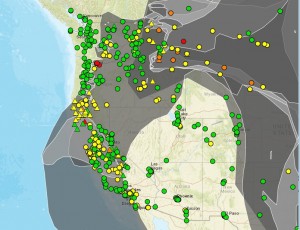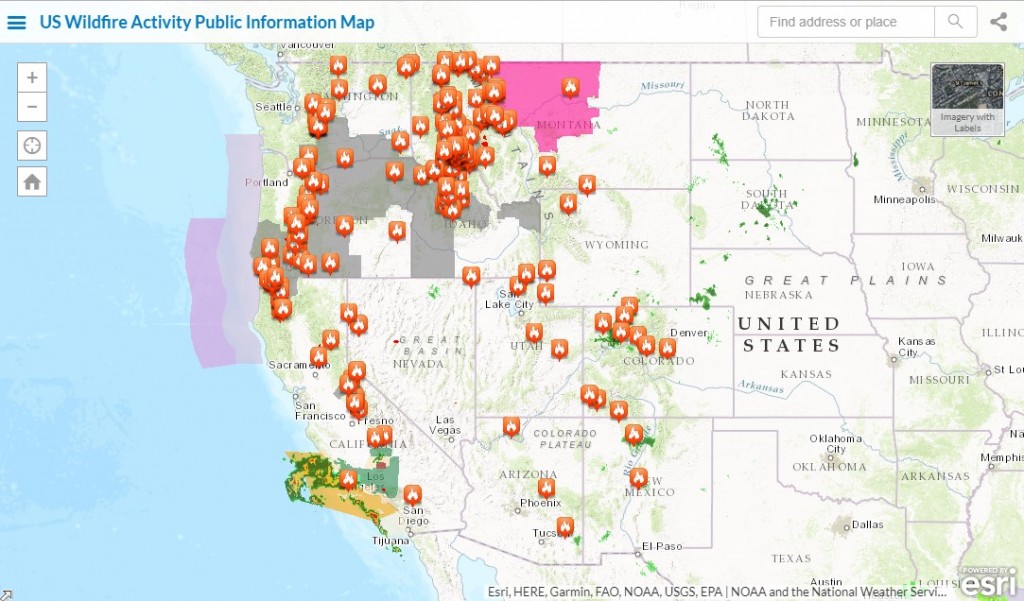If you live in the American West, you’re probably aware that it’s fire season. According to Chris Wilcox of the National Interagency Fire Center, there were about 123 large fires across the country, adding up to 2 million acres on fire as of September 10th. An ArcGIS Map shows the extent of the damage, with fire markers blanketing Idaho and tracing the Cascade Range.

Coupled with the property damage and destruction caused by the flames, the smoke trapped by high pressure systems has been prompting air quality warnings for months. While the trapped smoke actually helps firefighters, it comes with health costs and impacts on a large scale.
The Costs
Put simply, wildfires cause damages and create indirect costs. These fall into a few categories: damages from the fire, health costs caused by smoke, lost revenue for recreation and transportation, loss of ecosystem services, and the cost of actually containing or fighting the fire. In order to make these costs clearer, I’ll use an example.
The Eagle Creek Fire
Along the border between Oregon and Washington, a fire was started by fireworks, and now 35,636 acres have burned. The Eagle Creek Fire covers a major recreational area, has caused closures on I-84, and also is home to a fair number of homes and businesses. In 2016, the federal government spent about $2 billion on fire suppression, which works out to about $3,585 per acre on average. So, if the Eagle Creek Fire was completely contained, then it would cost about $128 million for suppression alone.
The Columbia Gorge is also home to Multnomah Falls, which is visited by 2 million people annually. A 2013 study by Eric M. White and Darren Goodding of Oregon State University estimated that visitors to the Gorge generated upwards of $50 million for local communities in 2012. As the fire rages, the communities in the Gorge are going without that revenue generated by visitors. Health impacts are difficult to calculate due to the varying amounts of people impacted, but a study on fine particle air pollution by the Washington Department of Ecology estimated that 1,100 people die and 4,600 are impacted annually by fine particle air pollution, to the tune of $190 million. If we do some rough math, we can estimate that in a two week period, each person impacted would cost $1,721 indirectly through increased healthcare costs and lost productivity. Ecosystem services are also difficult to gauge, but a study by Earth Economics valued the ecosystem services at $2,660 per acre of forest in the Columbia River Gorge.
Conclusions
The real question is, now that we know how much wildfires cost, what should we do about it? As approximately half of the US Forestry Service’s budget currently goes to fighting fires, drawing money away from ecosystem management, it seems that something must be done to bolster preventative efforts. How many times do we have to get burned before something changes?

